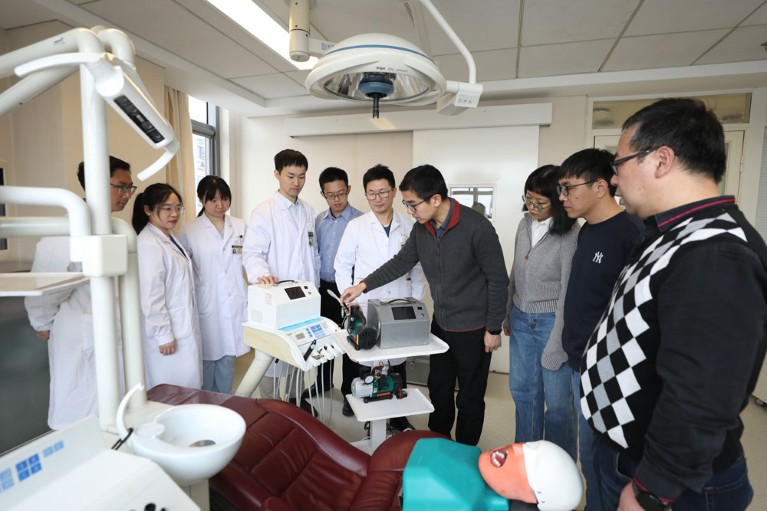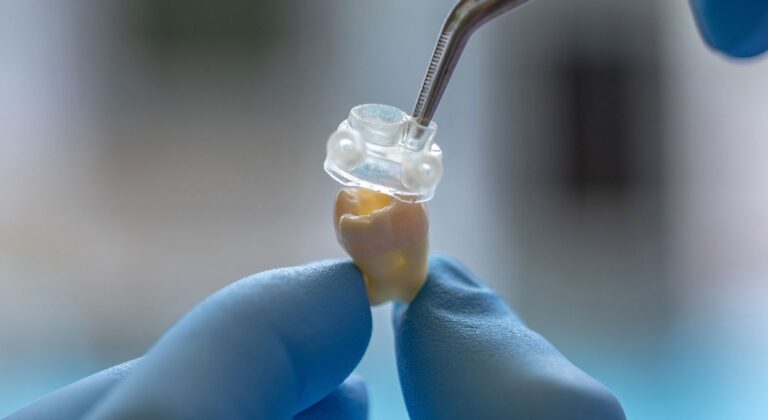Researchers in China are working to help provide universal access to quality dental care.
Many of us will at some point suffer from endodontic disease, such as an inflammation of the pulp inside a tooth. This is manageable if you have access to an experienced endodontist, but a potential disaster if you don’t. Untreated endodontic disease can lead to severe pain, infections that spread to the jaw or bloodstream, and tooth loss.
“In China, the shortage of endodontics is a critical problem,” says Jizhi Zhao, dean of dentistry at Peking Union Medical College Hospital in Beijing.
To address this, Zhao’s team has developed a new treatment called PUMCH therapy, short for “Photoacoustic-steaming Unite Minimal-invasive Chemomechanical-preparation Hydramatic-obturation.” Zhao is also working with fluid mechanics expert Chong Pan from nearby Beihang University to develop a prototype endodontic robot to help deliver PUMCH treatment. The robot, which is not yet approved for use, could lead to more comfortable and accurate treatment that could be done by most dentists, Zhao says.
Explosive cleaning
Endodontic treatment usually involves removing the debris and microorganisms inside a tooth to clear the infection as much as possible, followed by filling the root canal to prevent reinfection. Teeth are cleaned through a combination of topical antimicrobials and mechanical tools, such as hand files, drills, ultrasound devices, and — increasingly — laser tools.
But the whole process is delicate and occasionally more damage is done. “The complexity and variability of root canal anatomy requires precision, which relies heavily on the fine skills and experience of endodontists, especially in the mechanical preparation process,” Zhao explains.


Dental robots like this prototype could one day make treatment safer and more widely available.
The prototype endodontic robot uses a type of laser called an Er:YAG laser, which vaporizes water in the pulp chamber, causing microbursts that destroy organic and inorganic particles, reducing the need for mechanical preparation.
Zhao’s team tested the Er:YAG laser at different settings on tooth models of different shapes and sizes1. The results, along with a series of further tests, were used to optimize the Er:YAG laser parameters to a range that would help ensure safer treatment for different tooth shapes.
The endodontic robot is intended to ensure complete disinfection “and also maintain the integrity of the tooth structure, greatly reducing the risk of post-operative weakening of the teeth,” says Zhao.
The team then enabled the prototype robot to perform automated root canal fillings, using vacuum-filling technology aimed at producing a more uniform distribution of the filler. This could avoid over-drilling, Zhao explains. The precision of the endodontic robot is meant to reduce the risk of overfilling which can also cause damage.
It is sealed and delivered
Development of the endodontic robot is supported by the Chinese government’s National High Level Hospital Clinical Research Funding initiative, which supports the translation of research into practical uses, Zhao says. Since last year, a medical robotics company in Beijing has been refining the technology to improve patient comfort and usability for dentists.
“Our goal is to expand the application of root canal therapy to general dental practices, not just specialty endodontists, for a broader patient demographic,” he says. “Automating dental procedures is critical to making quality dental care a universal standard, not a privilege.”


